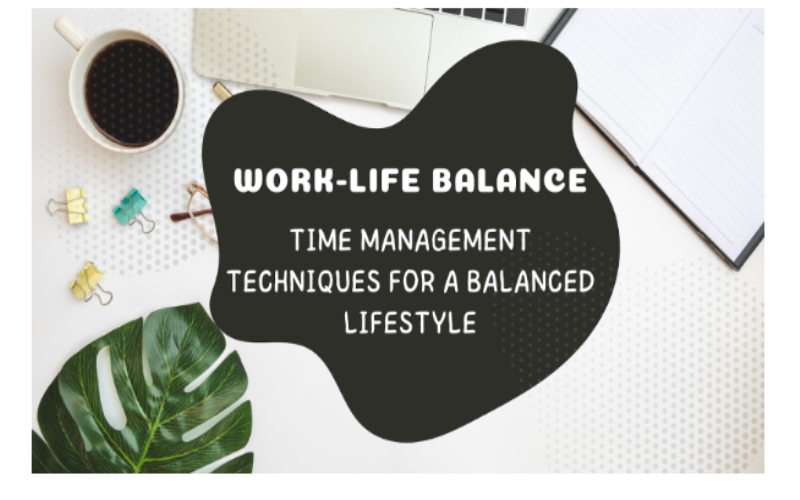Finding harmony between the ever-increasing demands of work and personal life may seem as elusive as searching for the holy grail. However, every day, individuals manage to strike the coveted balance between their careers and relationships. So what’s their secret? Turns out, with some intention and the right time management techniques, work-life bliss is possible for us all.
In this post, we’ll explore practical strategies used by work-life ninjas to master the art of balance and take back control of their schedules. So whether you’re a busy parent, rising executive, or overcommitted entrepreneur, read on to uncover small changes that will lead to big shifts in how you divide your precious 24 hours. A world of greater energy, focus, and fulfillment awaits.
Prioritizing Work and Personal Life: The Key to Achieving Balance
Finding balance starts with taking an honest look at how you currently divide your time between work and personal activities. According to a recent study, 50% of workers in the United Kingdom struggle with work-life balance and experience stress as a result.
This is why setting clear boundaries and learning to distinguish between high and low-priority tasks at work and home. Take a look at your current schedule and identify activities or responsibilities that can be delegated, automated, or eliminated. This action frees up time to dedicate to self-care and relationships.
If you feel completely overwhelmed and need more structured guidance, consider enrolling in time management courses UK. These courses teach frameworks and skills tailored to your unique workload challenges, which can help transform chaotic schedules into streamlined systems optimized for balance.
Don’t hesitate to engage in an open dialogue with your employer regarding establishing boundaries around working hours and availability. With intention and some compromise, you can find fulfillment in both your work and personal life.
Effective Time Management Techniques
Mastering specific time management techniques can significantly enhance your productivity and efficiency during working hours.
The Eisenhower Matrix
This prioritization method involves categorizing tasks based on their urgency and importance.
| Task Type | Description |
| Important & Urgent | Require immediate attention and have a high impact. Schedule these first. |
| Important & Not Urgent | High impact but has flexibility on timing. Assign due dates. |
| Not Important & Urgent | Require attention but have low impact. Delegate or reschedule these if possible. |
| Not Important & Not Urgent | Low impact and flexibility. Minimize time on these. |
Review your task list daily and slot each item into one of the four quadrants. Then tackle each quadrant accordingly. This action frees up your schedule to focus maximum time on high-impact activities.
The Pomodoro Technique
This productivity method breaks your workday into short, timed intervals separated by brief breaks. Here’s how to implement it:
- Set a timer for 25 minutes of focused work.
- When the timer rings, take a 5-minute break.
- After four 25-minute work sprints, take a 15-30 minute extended break.
- Repeat until your tasks for the day are complete.
The timed work/break cycles enhance concentration while also allowing for mental reset moments. Pomodoro sprints reduce the tendency to burnout or procrastinate.
Time Blocking
Time blocking involves proactively assigning specific blocks of time in your calendar to various work and personal activities. Schedule time blocks for a week in advance. Then stick to those blocks diligently. This brings structure and protection for what matters most.
Leveraging Technology for Better Time Management
In addition to these analog techniques, a wide array of technology tools exist to facilitate time management and time management training:
Technology provides numerous tools to enhance productivity and facilitate work-life balance.
- Calendar apps like Google Calendar or Outlook allow you to time block efficiently. Integrate personal and work calendars to visualize total commitments.
- To-do list apps like Asana and Trello enable you to prioritize tasks and set reminders based on due dates or when time blocks occur.
- Team messaging apps like Slack or Microsoft Teams cut down on unnecessary meetings by facilitating quick conversations.
- Project management tools like Asana or Smartsheet give leadership visibility into team workflows and deadlines to avoid last-minute emergencies.
Studies show many employees in the UK view flexibility as crucial for balance and exploring remote work technologies that untether you from the office. Video conferencing, cloud-based file sharing, online whiteboards, and more enable productive collaboration from anywhere.
Establish guidelines regarding working hours and availability when utilizing technologies for remote work. Disconnect outside designated hours to prevent burnout.
However, be aware of potential distractions and the creation of always-on work expectations that some technologies foster. Set clear usage guidelines to prevent digital burnout. With intention, technology can be leveraged as an ally, not an adversary, in the quest for work-life balance and time management training.
Establishing a Routine That Fosters Work-Life Balance
While tools and techniques provide the nuts and bolts, your daily and weekly routine acts as the engine that converts these pieces into a balanced lifestyle. Establishing predictable routines around key activities enhances your productivity while reducing stress.
- Morning Rituals – Kickstart your day with movement, intention-setting, and a nourishing breakfast. This primes you for focused work later on.
- Unplugging Hour – Build in screen-free time before bed to decompress. Activities like reading, stretching, and journaling pave the way for restful sleep.
- Weekly Planning – Look at your calendar every Friday and identify any adjustments needed to ensure you meet upcoming work deadlines. Also, schedule self-care activities so they don’t fall by the wayside.
Of course, the perfect balance between work and life is not realistic with the ebbs and flows of daily demands. Treat your routine as an adaptable framework, not a rigid law. Stay open to recalibration as your priorities shift. With intention and flexibility, your daily rituals provide the backbone of sustainable work-life harmony and time management.
Self-Care: The Foundation of a Balanced Lifestyle
At the core of every balanced lifestyle is an unwavering commitment to self-care through healthy habits:
- Make physical activity non-negotiable – Carve time for exercise into each day, even if just a walk or stretch breaks. This boosts energy and mental clarity.
- Fuel yourself optimally – Incorporate nutritious whole foods and stay hydrated. This nourishes your body for peak performance.
- Prioritize sleep – Adhere to a regular sleep/wake schedule that allows for 7-9 hours nightly. Adequate sleep enhances focus and emotional regulation.
In addition to these pillars, build-in activities that spark joy and connection: hobbies, social gatherings, travel, volunteering, etc. A balanced lifestyle requires that your cup is regularly refilled emotionally and spiritually. Don’t let self-care slip through the cracks.
Overcoming Common Challenges to Maintaining Balance
Despite best intentions, roadblocks inevitably arise that can knock your work-life balance off course:
- Overcommitment – Refrain from saying yes to every request. Build in margins within your work capacity and schedule so you don’t take on more than you can handle.
- Workplace Pressure – If unreasonable expectations are placed on you, have a candid discussion with leadership about workload and deadlines. Propose alternative solutions that set you up for success.
- Remote Work Hazards – Set clearly defined work hours and locations. Communicate those to colleagues to establish boundaries. Disconnect outside designated work time.
With practice, you can gain mastery in upholding boundaries amid these common challenges. Don’t be afraid to ask for help from family, friends, or professionals to overcome roadblocks.
Continuously Evaluating and Adjusting Your Approach
Remember, work-life balance is a process, not a destination. Regularly reflect on what’s working well in your approach to balance and where you’re struggling. Solicit feedback from trusted peers or mentors on changes you can make.
As your personal and professional goals shift, so too must your strategy for managing competing demands. The right work-life balance framework for this season of life may not serve you well in the next. Give yourself permission to course-correct based on new insights.
With a growth mindset, curiosity about emerging best practices, and compassion for yourself on difficult days, you can continually refine your approach to work-life harmony and time management training.
FAQs: Addressing Your Top Concerns About Balance
How can I maintain balance in a high-pressure job?
- Negotiate reasonable deadlines on projects that enable high-quality work.
- Delegate tasks that others can own, even if you could do it faster yourself.
- Let go of perfectionist tendencies and focus on top priorities.
- Set realistic expectations about what you can accomplish weekly. Don’t overpromise your capacity.
What are signs my work-life balance is off?
- You frequently work evenings/weekends to catch up.
- You’re irritable, sleep-deprived, and struggle to focus.
- You’ve neglected hobbies and professional development goals.
- Close relationships are strained.
Regain balance by time-blocking personal activities into your calendar before work each week. Say no to non-essential projects. Seek support if burnout persists.
Is perfect balance achievable?
Don’t get hung up on pursuing elusive perfection with balance. Instead, aim for harmony and flexibility day-to-day. With self-awareness and continual adjustment, you can create a lifestyle where work and personal demands coexist peacefully most days. That’s a realistic goal to strive towards.
In Summary
At the end of the day, there is no panacea for the complex challenge of honoring both work and life. By experimenting with various time management tactics, establishing restorative routines, setting boundaries, and listening to your needs, you can stitch together an approach that supports your unique lifestyle.
While perfection may not be possible, progress certainly is. With an openness to constant adjustment, each small step moves you closer to a life where your work and personal buckets are full. No more running on empty. The elusive work-life balance grail is closer than you think.





